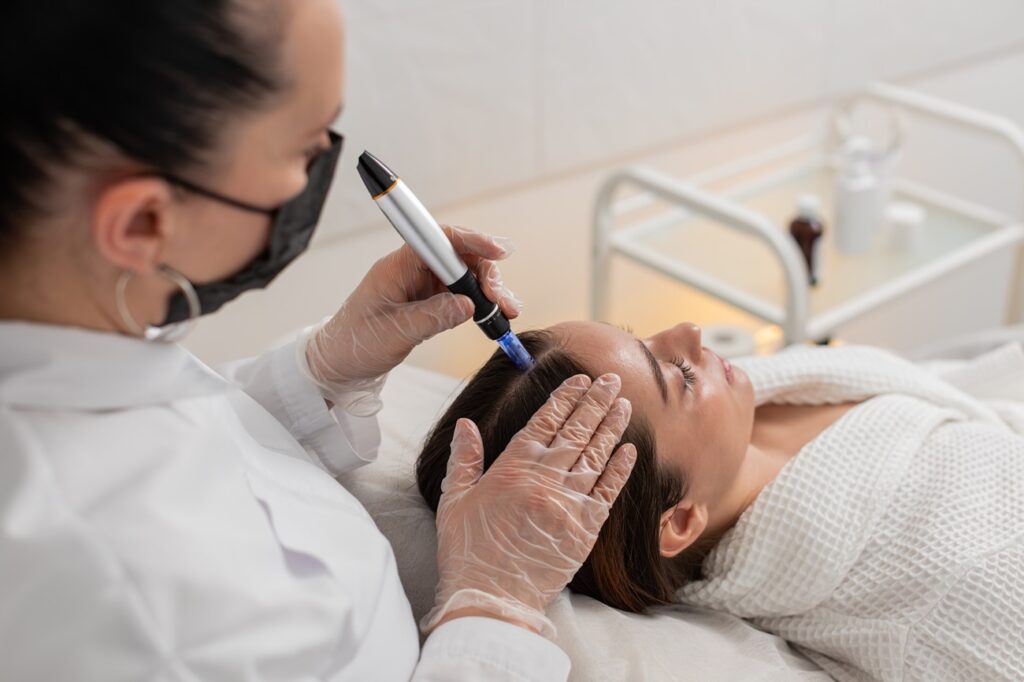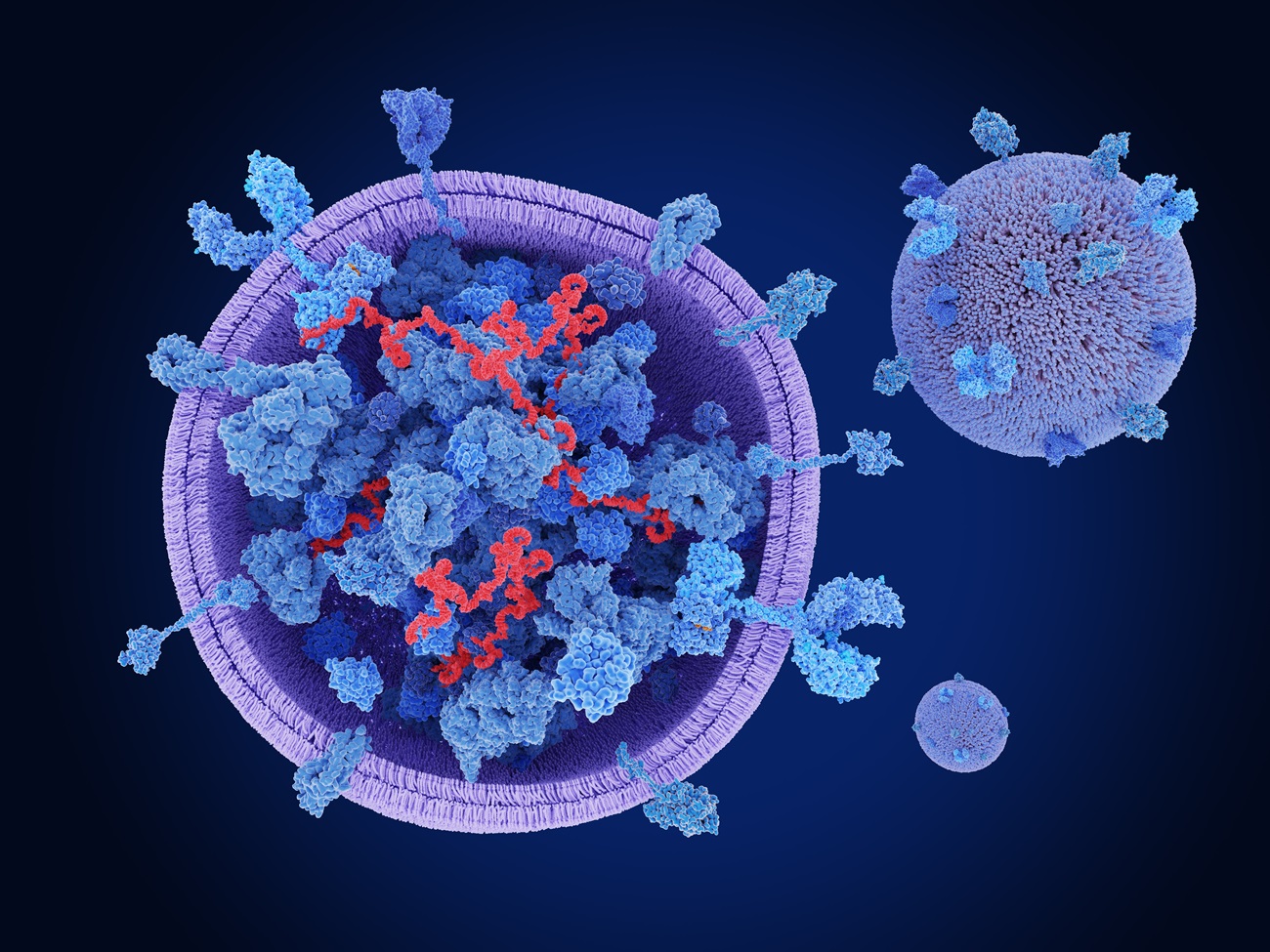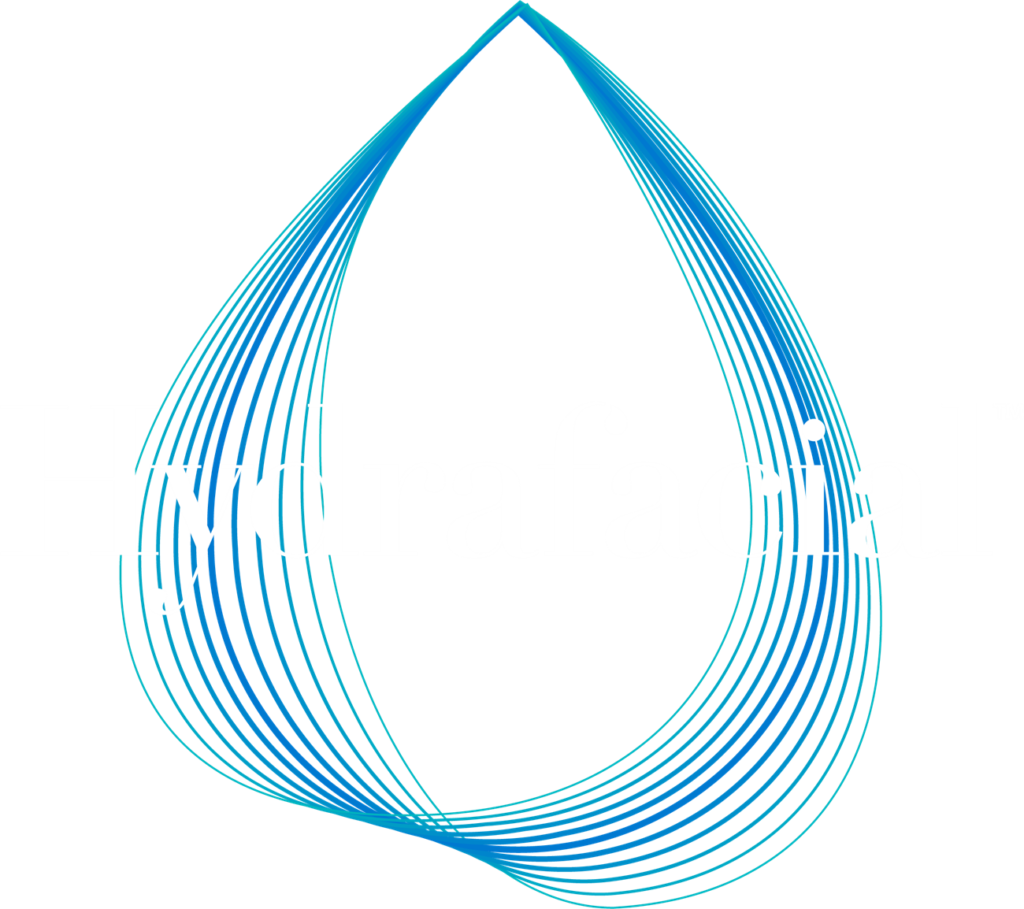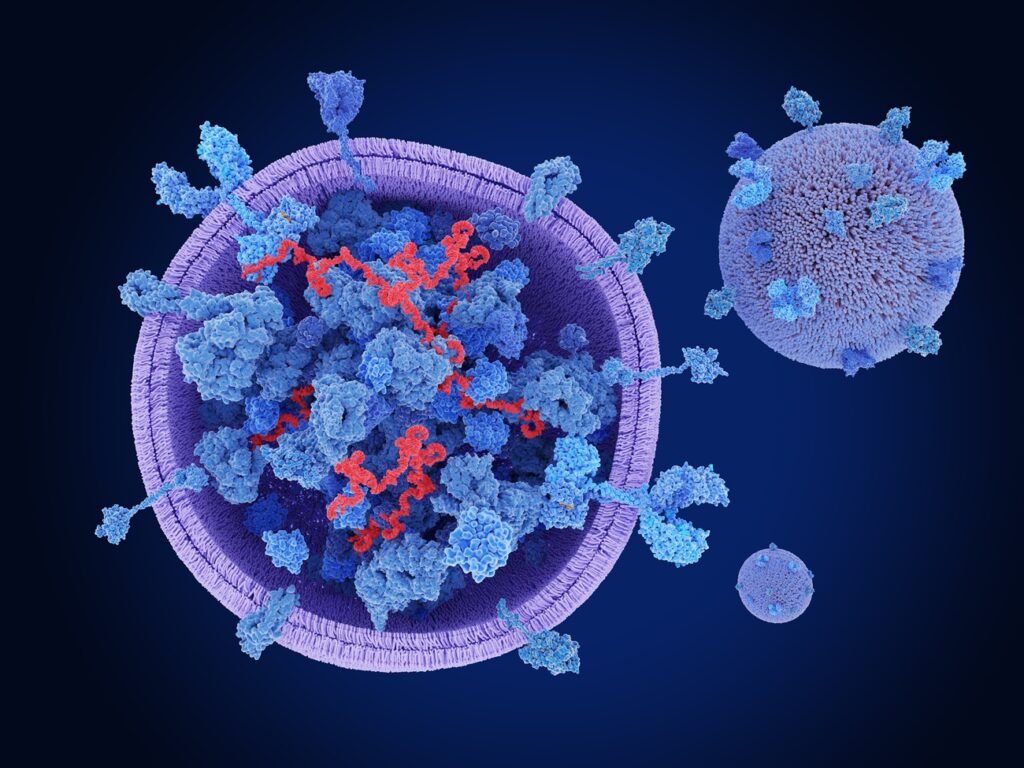What Are Exosomes and What Does the Current Evidence Say?
In the world of aesthetic medicine, certain trends rise quickly, often carried by celebrity endorsements, viral posts, or promises of skin-transforming results. Few recent innovations have generated more buzz (or confusion) than exosomes.
But what are exosomes, really? What does the science say about their role in regenerative aesthetics? And are they safe, effective, and evidence-backed, or simply the latest in a long line of overhyped ingredients?
At Allure Aesthetics, our approach to innovation is evidence-first. In this article, we break down the current research, clarify what exosome products are (and aren’t), and offer guidance for anyone curious about this promising but still-evolving field.
What Are Exosomes?
Exosomes are nano-sized extracellular vesicles (typically 30–150 nm) released by nearly all cell types in the body. They act as biological messengers, carrying proteins, lipids, DNA, and RNA between cells to regulate inflammation, immune responses, wound healing, and more.
Think of them as small packages that allow cells to communicate, coordinate, and repair.
They are found naturally in blood, saliva, urine, and even breast milk, and their cargo reflects the health and function of their source cells.
Why Are Exosomes Being Explored in Aesthetics?
In aesthetic medicine, exosomes are being explored for their regenerative properties. When applied topically, with microneedling, or injected into the skin or scalp, they may help:
- Stimulate collagen and elastin production
- Reduce inflammation post-procedure
- Accelerate wound healing
- Improve skin texture, tone, and hydration
- Support hair follicle growth in thinning hair
These effects stem from exosomes’ ability to deliver bioactive molecules (like growth factors, microRNAs, and cytokines) directly into cells. Their small size allows for deeper penetration and efficient cellular signaling.
What Types of Exosome Products Are Being Used?
Currently, most exosome products used in aesthetics fall into three broad categories:
1. Stem Cell-Derived Exosomes
Derived from mesenchymal or adipose-derived stem cells (adult stem cells found in fat, bone marrow, or umbilical tissue that support healing and collagen production). These are the most commonly used in regenerative therapies.
2. Platelet-Derived Exosomes
Often found within or isolated from PRP (platelet-rich plasma). While promising, direct evidence for isolated use remains limited.
3. Plant-Based Exosomes
Sourced from botanicals like aloe or rice. These are used in skincare, but clinical data on human efficacy is sparse.
Most exosome products are applied topically (often after microneedling or laser), but others are exploring injectable use for deeper delivery.
| Type | Evidence in Aesthetics | Common Uses | Limitations |
|---|---|---|---|
| Stem Cell-Derived | Strongest evidence (especially MSCs) | Skin rejuvenation, hair restoration, wound healing | High variability |
| Platelet-Derived | Moderate (mostly extrapolated from PRP data) | Tissue repair, anti-aging, post-laser | Few direct studies on isolated exosomes |
| Plant-Based | Preliminary (mostly preclinical) | Scar treatment, pigmentation support | Sparse clinical data in human subjects |
*Important Note: As of this writing, no exosome product is FDA-approved for treating medical conditions, even in aesthetic use. All current uses are off-label or marketed as cosmetic.
What Are Some of the Leading Exosome Products in Aesthetics?
Several brands have emerged as leaders in the aesthetic space. While product popularity varies by region and provider philosophy, the following are among the most widely used:
| Product Name | Origin | Common Use Cases | Regulatory Status | Notes |
|---|---|---|---|---|
| BENEV Exosome Regenerative Complex | Adipose-derived MSCs | Skin rejuvenation, post-laser recovery | Cosmetic use only | Widely used post-microneedling |
| ExoCoBio (ASCE+) | Umbilical cord MSCs | Skin texture, tone, anti-aging | Cosmetic use only | Popular Korean brand with global reach |
| XoGlo | Bone marrow-derived MSCs | Anti-aging, regenerative medicine | Cosmetic use only | Marketed for regenerative and anti-aging protocols |
| ExoIE | Purified stem cell vesicles | Skin repair, barrier support | Cosmetic use only | Formulated for clinical-grade skincare use |
| Plated | Platelet-derived exosomes | Daily skin repair, maintenance | Cosmetic use only | High-end luxury retail skincare brand |
*All listed products are marketed as cosmetics. None are FDA-approved for therapeutic or aesthetic medical use.
While these products vary in origin and composition, most are intended for:
- Use post-procedure (e.g., laser, microneedling)
- Home skincare regimens
- Hair restoration protocols
Despite promising short-term outcomes in early clinical and case studies, all share the same caveats:
- Lack of long-term safety data
- Absence of regulatory approval
- Significant variability in manufacturing protocols
Is There Clinical Evidence for Exosome Use in Aesthetics?
Yes and no. While early studies are promising, the field remains in its infancy. Here’s what we know so far:
Supportive Early Evidence
Several small clinical trials and preclinical studies have reported:
- Improved healing and reduced downtime after microneedling and laser procedures
- Enhanced skin texture, tone, and elasticity
- Increased hair density and follicle activity in early-phase hair restoration protocols
- Reduced pigmentation and post-inflammatory erythema
Studies tend to focus on stem cell-derived exosomes, especially from human umbilical or adipose tissue. Results suggest enhanced extracellular matrix remodeling (supporting skin structure and firmness), angiogenesis (formation of new blood vessels for better circulation and healing), and anti-inflammatory effects.
Major Gaps Remain
Despite early excitement, we must be clear:
- Most studies are small, short-term, and lack control groups
- There is no standardized dosing or delivery protocol
- Many products vary dramatically in source material, purification, and quality
- Long-term safety data is not yet available
How Does Using Exosomes Compare to PRP or Microneedling Alone?
Some clinics now offer exosome add-ons to procedures like PRP or microneedling, claiming superior results. Is that supported?
- PRP does naturally contain exosomes released by platelets and is proven effective, but also includes a broader mix of cytokines and growth factors than exosomes.
- Exosome products may be more targeted and consistent in molecular cargo, but lack the full spectrum found in PRP.
- Early split-face studies suggest faster healing and greater glow when exosomes are applied after microneedling compared to microneedling alone.
Bottom line: Exosomes may complement, not replace, established regenerative treatments like PRP or PRF.

What Type of Exosomes Are Best With Microneedling?
Based on current evidence, mesenchymal stem cell-derived exosomes (MSC-Exo) appear to be the most appropriate choice when used in conjunction with microneedling. These exosomes have demonstrated meaningful regenerative effects, including:
- Improved skin texture and elasticity
- Enhanced hydration and pigmentation balance
- Accelerated wound healing
Mechanistic studies show that MSC-Exo modulate key cellular pathways involved in collagen production, cell proliferation, and anti-inflammatory activity, making them well suited for post-procedure recovery and skin rejuvenation.
Other exosome types studied in conjunction with microneedling include:
- Lactobacillus-derived exosomes (LDE): Appears to be effective for acne, PIH, and atrophic scars in early observational data.
- Plant-derived exosomes (e.g., rose stem cell): May support scar remodeling with good tolerability, though clinical experience is limited.
Direct head-to-head studies are lacking. However, the consensus in available literature supports MSC-derived exosomes as the most broadly applicable and well-studied add-on for microneedling in aesthetics.
Are There Any Risks or Side Effects?
Short-term safety appears favorable. Reported side effects are generally mild and localized:
- Redness
- Swelling
- Tenderness
- Pruritus (itching) or irritation (especially with microneedling)
However, potential risks include:
- Immunogenicity (risk of triggering an unwanted immune response) if exosomes are poorly characterized
- Infection transmission if products aren’t properly sterilized
- Oncogenic signaling – a theoretical risk of triggering abnormal cell growth if exosomes come from improperly screened sources.
The lack of standardized manufacturing or regulation makes it critical to choose providers and products carefully.
Our Position at Allure Aesthetics
At Allure, we’re always exploring the most promising advances in aesthetic medicine—exosomes included. While this field is still evolving, the early evidence around topical exosome use is exciting, especially in conjunction with procedures like microneedling.
We’re actively reviewing the latest research, evaluating product options, and considering how this could complement our approach to long-term, relationship-based care.
If and when we find an exosome product that meets our standards for safety, transparency, and clinical benefit, we’ll be proud to offer it. As always, any new service we introduce will reflect the same level of integrity, education, and individualized care you’ve come to expect from us.
Frequently Asked Questions (FAQ)
Are exosome facials FDA-approved?
No. As of 2025, no topical or injectable exosome products are FDA-approved to treat any specific medical condition or dermatologic disease. Current aesthetic use is limited to general cosmetic applications, such as supporting skin quality and post-procedure recovery.
Do exosomes replace PRP?
Not necessarily. They may offer more targeted effects but lack PRP’s full spectrum of growth factors. They may work well together, or be used for different purposes.
Are exosome treatments safe?
Short-term studies suggest minimal risks, but long-term safety data are lacking. Source and manufacturing matter greatly.
Can I use exosome serums at home?
Some skincare brands include exosome-like ingredients, but efficacy varies. These are not the same as clinical-grade products.
Final Thoughts
Exosomes hold incredible promise for skin and regenerative medicine—but they are not a miracle shortcut. They are a tool, not a magic fix. At Allure Aesthetics, we believe your care should be thoughtful, individualized, and rooted in trust.
If you have questions about regenerative treatments or want guidance on what’s right for your skin goals, we’re here to help. Feel free to email us at info@allureaestheticsllc.com or call or text us at 610 393-1253. If you’d like to schedule an appointment to discuss all your goals and options, please visit our booking page.
Evidence Matters.
At Allure, we believe informed decisions start with credible information. Below, you’ll find a selection of references that helped guide the content in this article. If you’re interested in a deeper dive into the science behind exosomes, we welcome you to explore them.
- A Comprehensive Review on Recent Advances in Exosome Isolation and Characterization: Toward Clinical Applications. Dilsiz N. Translational Oncology. 2024;50:102121. doi:10.1016/j.tranon.2024.102121.
- Adipose-Derived Stem Cell Exosomes: Multifaceted Therapeutic Applications in Regenerative Medicine. Rau CS, Kuo PJ, Hsieh CH. International Journal of Surgery (London, England). 2025;:01279778-990000000-02856. doi:10.1097/JS9.0000000000002841.
- Advances in Platelet Rich Plasma-Derived Extracellular Vesicles for Regenerative Medicine: A Systematic-Narrative Review. Anitua E, Troya M, Falcon-Pérez JM, et al. International Journal of Molecular Sciences. 2023;24(17):13043. doi:10.3390/ijms241713043.
- Applications of the Regenerative Capacity of Platelets in Modern Medicine. Cecerska-Heryć E, Goszka M, Serwin N, et al. Cytokine & Growth Factor Reviews. 2022;64:84-94. doi:10.1016/j.cytogfr.2021.11.003.
- A Prospective Study of Exosome Therapy for Androgenetic Alopecia. Wan J, Kim SB, Cartier H, et al. Aesthetic Plastic Surgery. 2025;49(11):3151-3156. doi:10.1007/s00266-025-04817-9.
- A Review on Exosomes Application in Clinical Trials: Perspective, Questions, and Challenges. Rezaie J, Feghhi M, Etemadi T. Cell Communication and Signaling : CCS. 2022;20(1):145. doi:10.1186/s12964-022-00959-4.
- A Systematic Review and Meta-Analysis of Clinical Trials Assessing Safety and Efficacy of Human Extracellular Vesicle-Based Therapy. Van Delen M, Derdelinckx J, Wouters K, Nelissen I, Cools N. Journal of Extracellular Vesicles. 2024;13(7):e12458. doi:10.1002/jev2.12458.
- Autolougous Platelet Concentrates in Esthetic Medicine. Davies C, Miron RJ. Periodontology 2000. 2025;97(1):363-419. doi:10.1111/prd.12582.
- Biochemistry of Exosomes and Their Theranostic Potential in Human Diseases. Dwivedi M, Ghosh D, Saha A, et al. Life Sciences. 2023;315:121369. doi:10.1016/j.lfs.2023.121369.
- Biogenesis, Composition and Potential Therapeutic Applications of Mesenchymal Stem Cells Derived Exosomes in Various Diseases. Yuan YG, Wang JL, Zhang YX, et al. International Journal of Nanomedicine. 2023;18:3177-3210. doi:10.2147/IJN.S407029.
- Biological Functions and Current Advances in Isolation and Detection Strategies for Exosome Nanovesicles. Boriachek K, Islam MN, Möller A, et al. Small (Weinheim an Der Bergstrasse, Germany). 2018;14(6). doi:10.1002/smll.201702153.
- Characterization and Therapeutic Use of Extracellular Vesicles Derived From Platelets. Spakova T, Janockova J, Rosocha J. International Journal of Molecular Sciences. 2021;22(18):9701. doi:10.3390/ijms22189701.
- Characterization of the Molecular Composition and in Vitro Regenerative Capacity of Platelet-Based Bioproducts and Related Subfractions. Acebes-Huerta A, Martínez-Botía P, Carbajo-Argüelles G, et al. Acta Biomaterialia. 2024;177:132-147. doi:10.1016/j.actbio.2024.01.029.
- Clinical Applications for Exosomes: Are We There Yet?. Perocheau D, Touramanidou L, Gurung S, Gissen P, Baruteau J. British Journal of Pharmacology. 2021;178(12):2375-2392. doi:10.1111/bph.15432.
- Clinical Applications of Exosomes: A Critical Review. Lee KWA, Chan LKW, Hung LC, et al. International Journal of Molecular Sciences. 2024;25(14):7794. doi:10.3390/ijms25147794.
- Clinical Outcomes of Exosome-Augmented Microneedling and Laser Therapies in Full-Face Skin Rejuvenation: A Split-Face Observational Study. Vitale M, Ruri P, Marini S, Zappia E, Yi KH. The Journal of Craniofacial Surgery. 2025;:00001665-990000000-03111. doi:10.1097/SCS.0000000000011807.
- Comparison and Investigation of Exosomes Derived From Platelet-Rich Plasma Activated by Different Agonists. Rui S, Yuan Y, Du C, et al. Cell Transplantation. 2021 Jan-Dec;30:9636897211017833. doi:10.1177/09636897211017833.
- Current Knowledge and Future Perspectives of Exosomes as Nanocarriers in Diagnosis and Treatment of Diseases. Zou Z, Li H, Xu G, et al. International Journal of Nanomedicine. 2023;18:4751-4778. doi:10.2147/IJN.S417422.
- Effectiveness of Extracellular Vesicle Application in Skin Aging Treatment and Regeneration: Do We Have Enough Evidence From Clinical Trials?. Domaszewska-Szostek A, Krzyżanowska M, Polak A, Puzianowska-Kuźnicka M. International Journal of Molecular Sciences. 2025;26(5):2354. doi:10.3390/ijms26052354.
- Effects of Chlorella Protothecoides-Derived Polydeoxyribonucleotides on Skin Regeneration and Wound Healing. Park JM, Nam GB, Lee ES, et al. Archives of Dermatological Research. 2025;317(1):483. doi:10.1007/s00403-025-03885-w.
- Exosome-Based Therapies in Dermatology. Aryal S. Aesthetic Plastic Surgery. 2025;:10.1007/s00266-025-05073-7. doi:10.1007/s00266-025-05073-7.
- Exosome Limitations in the Treatment of Inflammatory Diseases. Skuratovskaia D, Vulf M, Khaziakhmatova O, et al. Current Pharmaceutical Design. 2021;27(28):3105-3121. doi:10.2174/1381612826666201210120444.
- Exosomes. Pegtel DM, Gould SJ. Annual Review of Biochemistry. 2019;88:487-514. doi:10.1146/annurev-biochem-013118-111902.
- Exosomes and Other Extracellular Vesicles With High Therapeutic Potential: Their Applications in Oncology, Neurology, and Dermatology. Szwedowicz U, Łapińska Z, Gajewska-Naryniecka A, Choromańska A. Molecules (Basel, Switzerland). 2022;27(4):1303. doi:10.3390/molecules27041303.
- Exosomes and the Cardiovascular System: Role in Cardiovascular Health and Disease. Neves KB, Rios FJ, Sevilla-Montero J, Montezano AC, Touyz RM. The Journal of Physiology. 2023;601(22):4923-4936. doi:10.1113/JP282054.
- Exosomes as New Biomarkers and Drug Delivery Tools for the Prevention and Treatment of Various Diseases: Current Perspectives. Liu Q, Li S, Dupuy A, et al. International Journal of Molecular Sciences. 2021;22(15):7763. doi:10.3390/ijms22157763.
- Exosomes Based Advancements for Application in Medical Aesthetics. Zhang B, Gong J, He L, et al. Frontiers in Bioengineering and Biotechnology. 2022;10:1083640. doi:10.3389/fbioe.2022.1083640.
- Exosomes Derived From Mesenchymal Stem Cells: A Promising Cell-Free Therapeutic Tool for Cutaneous Wound Healing. Zakeri A, Khaseb S, Akhavan Rahnama M, Hajaliaskari A, Soufi Zomorrod M. Biochimie. 2023;209:73-84. doi:10.1016/j.biochi.2023.01.013.
- Exosomes Engineering and Their Roles as Therapy Delivery Tools, Therapeutic Targets, and Biomarkers. Kučuk N, Primožič M, Knez Ž, Leitgeb M. International Journal of Molecular Sciences. 2021;22(17):9543. doi:10.3390/ijms22179543.
- Exosomes Exposed: Overview Systematic Review on Evidence Versus Expectation in Aesthetic and Regenerative Medicine. Rahman E, Webb WR, Rao P, et al. Aesthetic Plastic Surgery. 2025;49(2):557-568. doi:10.1007/s00266-024-04276-8.
- Exosomes for Treating Hair Loss: A Review of Clinical Studies. Queen D, Avram MR. Dermatologic Surgery : Official Publication for American Society for Dermatologic Surgery [Et Al.]. 2025;51(4):409-415. doi:10.1097/DSS.0000000000004480.
- Exosomes From Adipose-Derived Stem Cells: The Emerging Roles and Applications in Tissue Regeneration of Plastic and Cosmetic Surgery. Xiong M, Zhang Q, Hu W, et al. Frontiers in Cell and Developmental Biology. 2020;8:574223. doi:10.3389/fcell.2020.574223.
- Exosomes From Different Cells: Characteristics, Modifications, and Therapeutic Applications. Li M, Li S, Du C, et al. European Journal of Medicinal Chemistry. 2020;207:112784. doi:10.1016/j.ejmech.2020.112784.
- Exosomes in Dermatology: A Comprehensive Review of Current Applications, Clinical Evidence, and Future Directions. Nahm WJ, Nikas C, Goldust M, et al. International Journal of Dermatology. 2025;. doi:10.1111/ijd.17903.
- Exosomes in the Real World of Medical Aesthetics: A Review. Pinto H, Sánchez-Vizcaíno Mengual E. Aesthetic Plastic Surgery. 2024;48(13):2513-2527. doi:10.1007/s00266-023-03844-8.
- Exosomes Isolated From Platelet-Rich Plasma and Mesenchymal Stem Cells Promote Recovery of Function After Muscle Injury. Iyer SR, Scheiber AL, Yarowsky P, et al. The American Journal of Sports Medicine. 2020;48(9):2277-2286. doi:10.1177/0363546520926462.
- Exosomes─Nature’s Lipid Nanoparticles, a Rising Star in Drug Delivery and Diagnostics. Tenchov R, Sasso JM, Wang X, et al. ACS Nano. 2022;16(11):17802-17846. doi:10.1021/acsnano.2c08774.
- Exosomes: The Emerging Mechanisms and Potential Clinical Applications in Dermatology. Yu H, Feng H, Zeng H, et al. International Journal of Biological Sciences. 2024;20(5):1778-1795. doi:10.7150/ijbs.92897.
- Exosomes: The Latest in Regenerative Aesthetics. Vyas KS, Kaufman J, Munavalli GS, et al. Regenerative Medicine. 2023;18(2):181-194. doi:10.2217/rme-2022-0134.
- Exosome Revolution or Marketing Mirage? AI-Based Multi-Domain Evaluation of Claims, Scientific Evidence, Transparency, Public Sentiment, and Media Narratives. Rahman E, Sayed K, Rao P, et al. Aesthetic Plastic Surgery. 2025;49(12):3454-3479. doi:10.1007/s00266-025-04712-3.
- Exploring the Versatility of Exosomes: A Review on Isolation, Characterization, Detection Methods, and Diverse Applications. Altıntaş Ö, Saylan Y. Analytical Chemistry. 2023;95(44):16029-16048. doi:10.1021/acs.analchem.3c02224.
- Extracellular Vesicles in Facial Aesthetics: A Review. Kee LT, Ng CY, Al-Masawa ME, et al. International Journal of Molecular Sciences. 2022;23(12):6742. doi:10.3390/ijms23126742
- Fluid Platelet-Rich Fibrin (PRF) Versus Platelet-Rich Plasma (PRP) in the Treatment of Atrophic Acne Scars: A Comparative Study. Diab NAF, Ibrahim AM, Abdallah AM. Archives of Dermatological Research. 2023;315(5):1249-1255. doi:10.1007/s00403-022-02511-3.
- Human Mesenchymal Stromal Cell-Derived Exosomes Promote in Vitro Wound Healing by Modulating the Biological Properties of Skin Keratinocytes and Fibroblasts and Stimulating Angiogenesis. Tutuianu R, Rosca AM, Iacomi DM, Simionescu M, Titorencu I. International Journal of Molecular Sciences. 2021;22(12):6239. doi:10.3390/ijms22126239.
- Hybrid Exosomes, Exosome-Like Nanovesicles and Engineered Exosomes for Therapeutic Applications. Mondal J, Pillarisetti S, Junnuthula V, et al. Journal of Controlled Release : Official Journal of the Controlled Release Society. 2023;353:1127-1149. doi:10.1016/j.jconrel.2022.12.027.
- Isolation of Platelet-Derived Exosomes From Human Platelet-Rich Plasma: Biochemical and Morphological Characterization. Saumell-Esnaola M, Delgado D, García Del Caño G, et al. International Journal of Molecular Sciences. 2022;23(5):2861. doi:10.3390/ijms23052861.
- Lactobacillus-Derived Exosome Therapy for Active Acne Vulgaris, Post-Inflammatory Hyperpigmentation, and Atrophic Scarring. Wan J, Yoon SE, Pamela R, et al. The Journal of Craniofacial Surgery. 2025;:00001665-990000000-02645. doi:10.1097/SCS.0000000000011408.
- Mesenchymal Stem Cell Derived-Exosomes: A Modern Approach in Translational Medicine. Nikfarjam S, Rezaie J, Zolbanin NM, Jafari R. Journal of Translational Medicine. 2020;18(1):449. doi:10.1186/s12967-020-02622-3.
- Mesenchymal Stromal/Stem Cell (MSC)-derived Exosomes in Clinical Trials. Lotfy A, AboQuella NM, Wang H. Stem Cell Research & Therapy. 2023;14(1):66. doi:10.1186/s13287-023-03287-7.
- Microneedling Radiofrequency Followed by Topical Exosome Application Therapy for Pattern Hair Loss: A Scoping Review and Prospective Study. Koumprentziotis IA, Kroumpouzos E, Delavar S, Kroumpouzos G. Clinics in Dermatology. 2025;:S0738-081X(25)00207-X. doi:10.1016/j.clindermatol.2025.07.006.
- MSC-Derived Secretome and Exosomes in Dermatology: Mechanisms, Therapeutic Opportunities, and Scientific Challenges-a Narrative Review. da Costa Pereira Cestari M, Falavigna Tovo R, Franco Bueno D. International Journal of Dermatology. 2025;. doi:10.1111/ijd.17982.
- Multifaceted Therapeutic Potential of Plant-Derived Exosomes: Immunomodulation, Anticancer, Anti-Aging, Anti-Melanogenesis, Detoxification, and Drug Delivery. Karabay AZ, Barar J, Hekmatshoar Y, Rahbar Saadat Y. Biomolecules. 2025;15(3):394. doi:10.3390/biom15030394.
- Non-Clinical Safety Evaluation of Exosomes Derived From Human Umbilical Cord Mesenchymal Stem Cells in Cynomolgus Monkeys. Hu XM, Wang CC, Xiao Y, et al. International Journal of Nanomedicine. 2024;19:4923-4939. doi:10.2147/IJN.S454438.
- Platelet-Rich Plasma-Derived Extracellular Vesicles: A Superior Alternative in Regenerative Medicine?. Wu J, Piao Y, Liu Q, Yang X. Cell Proliferation. 2021;54(12):e13123. doi:10.1111/cpr.13123.
- Regenerative Aesthetics: A Genuine Frontier or Just a Facet of Regenerative Medicine: A Systematic Review. Rahman E, Carruthers JDA, Rao P, et al. Aesthetic Plastic Surgery. 2025;49(1):341-355. doi:10.1007/s00266-024-04287-5.
- Regenerative Skincare Technologies Derived From Human Fibroblasts: Growth Factors and Exosomes for Transformative Outcomes. Cheng T, Naughton GK, Makino ET, Kadoya K, Maitra P. Dermatologic Surgery : Official Publication for American Society for Dermatologic Surgery [Et Al.]. 2024;50(11S):S139-S144. doi:10.1097/DSS.0000000000004436.
- Regulatory Claims Made by US Businesses Engaged in Direct-to-Consumer Marketing of Purported Stem Cell Treatments and Exosome Therapies. Turner L, Martinez JR, Najjar S, et al. Regenerative Medicine. 2023;18(11):857-868. doi:10.2217/rme-2023-0117.
- Review of the Isolation, Characterization, Biological Function, and Multifarious Therapeutic Approaches of Exosomes. Gurunathan S, Kang MH, Jeyaraj M, Qasim M, Kim JH. Cells. 2019;8(4):E307. doi:10.3390/cells8040307.
- Role of Platelet-Derived Growth Factor in Wound Healing: Synergistic Effects With Other Growth Factors. Lynch SE, Nixon JC, Colvin RB, Antoniades HN. Proceedings of the National Academy of Sciences of the United States of America. 1987;84(21):7696-700. doi:10.1073/pnas.84.21.7696.
- Stem Cell-Derived Extracellular Vesicles in Skin Antiaging Treatments. Park JY, Jung SY, Yoo D, et al. ACS Nano. 2025;19(25):22504-22527. doi:10.1021/acsnano.4c17406.
- Systematic Review of Platelet-Rich Plasma and Platelet-Rich Fibrin in Facial Rejuvenation. Qin N, Kochheiser M, Akosman I, et al. Annals of Plastic Surgery. 2025;94(4S Suppl 2):S376-S389. doi:10.1097/SAP.0000000000004267.
- The Biology Function and Biomedical Applications of Exosomes. Kalluri R, LeBleu VS. Science (New York, N.Y.). 2020;367(6478):eaau6977. doi:10.1126/science.aau6977.
- The Evolution of Three Generations of Platelet Concentrates Products: A Leap From Classical Formulations to the Era of Extracellular Vesicles. Li Y, You H, Ou C, et al. Frontiers in Bioengineering and Biotechnology. 2025;13:1628565. doi:10.3389/fbioe.2025.1628565.
- The Machinery of Exosomes: Biogenesis, Release, and Uptake. Krylova SV, Feng D. International Journal of Molecular Sciences. 2023;24(2):1337. doi:10.3390/ijms24021337.
- The Multifaceted Exosome: Biogenesis, Role in Normal and Aberrant Cellular Function, and Frontiers for Pharmacological and Biomarker Opportunities. Pant S, Hilton H, Burczynski ME. Biochemical Pharmacology. 2012;83(11):1484-94. doi:10.1016/j.bcp.2011.12.037.
- The Novel Mechanisms and Applications of Exosomes in Dermatology and Cutaneous Medical Aesthetics. Xiong M, Zhang Q, Hu W, et al. Pharmacological Research. 2021;166:105490. doi:10.1016/j.phrs.2021.105490.
- Therapeutic Efficacy of Plant-Derived Exosomes for Advanced Scar Treatment: Quantitative Analysis Using Standardized Assessment Scales. Majewska L, Kondraciuk A, Paciepnik I, Budzyńska A, Dorosz K. Pharmaceuticals (Basel, Switzerland). 2025;18(8):1103. doi:10.3390/ph18081103.
- Therapeutic Features and Updated Clinical Trials of Mesenchymal Stem Cell (MSC)-Derived Exosomes. Lee BC, Kang I, Yu KR. Journal of Clinical Medicine. 2021;10(4):711. doi:10.3390/jcm10040711.
- The Role of Extracellular Vesicles in Cutaneous Remodeling and Hair Follicle Dynamics. Carrasco E, Soto-Heredero G, Mittelbrunn M. International Journal of Molecular Sciences. 2019;20(11):E2758. doi:10.3390/ijms20112758.
- The Science of Exosomes: Understanding Their Formation, Capture, and Role in Cellular Communication. Hushmandi K, Saadat SH, Raei M, et al. Pathology, Research and Practice. 2024;259:155388. doi:10.1016/j.prp.2024.155388.
- The Therapeutic and Commercial Landscape of Stem Cell Vesicles in Regenerative Dermatology. Davies OG, Williams S, Goldie K. Journal of Controlled Release : Official Journal of the Controlled Release Society. 2023;353:1096-1106. doi:10.1016/j.jconrel.2022.12.025.
- The Value of Platelet-Rich Plasma-Derived Extracellular Vesicles in Modern Medicine. Hou Y, Wen X, Zhou L, Fang X. Annals of Medicine. 2023;55(2):2287705. doi:10.1080/07853890.2023.2287705.
- The Yin and Yang of Exosome Isolation Methods: Conventional Practice, Microfluidics, and Commercial Kits. Shirejini SZ, Inci F. Biotechnology Advances. 2022 Jan-Feb;54:107814. doi:10.1016/j.biotechadv.2021.107814.
- Toxicological Evaluation of Exosomes Derived From Human Adipose Tissue-Derived Mesenchymal Stem/Stromal Cells. Ha DH, Kim SD, Lee J, et al. Regulatory Toxicology and Pharmacology : RTP. 2020;115:104686. doi:10.1016/j.yrtph.2020.104686.
- Uncovering the Gray Zone: Mapping the Global Landscape of Direct-to-Consumer Businesses Offering Interventions Based on Secretomes, Extracellular Vesicles, and Exosomes. Asadpour A, Yahaya BH, Bicknell K, Cottrell GS, Widera D. Stem Cell Research & Therapy. 2023;14(1):111. doi:10.1186/s13287-023-03335-2.
- Unravelling Exosome Paradigm: Therapeutic, Diagnostic and Theranostics Application and Regulatory Consideration. Tandon R, Srivastava N. Life Sciences. 2025;366-367:123472. doi:10.1016/j.lfs.2025.123472.
- Unveiling Exosomes in Combating Skin Aging: Insights Into Resources, Mechanisms and Challenges. Liang C, Yi Y, Li J, et al. Stem Cell Research & Therapy. 2025;16(1):474. doi:10.1186/s13287-025-04620-y.
- Update on Exosomes in Aesthetics. Hartman N, Loyal J, Fabi S. Dermatologic Surgery : Official Publication for American Society for Dermatologic Surgery [Et Al.]. 2022;48(8):862-865. doi:10.1097/DSS.0000000000003487.









